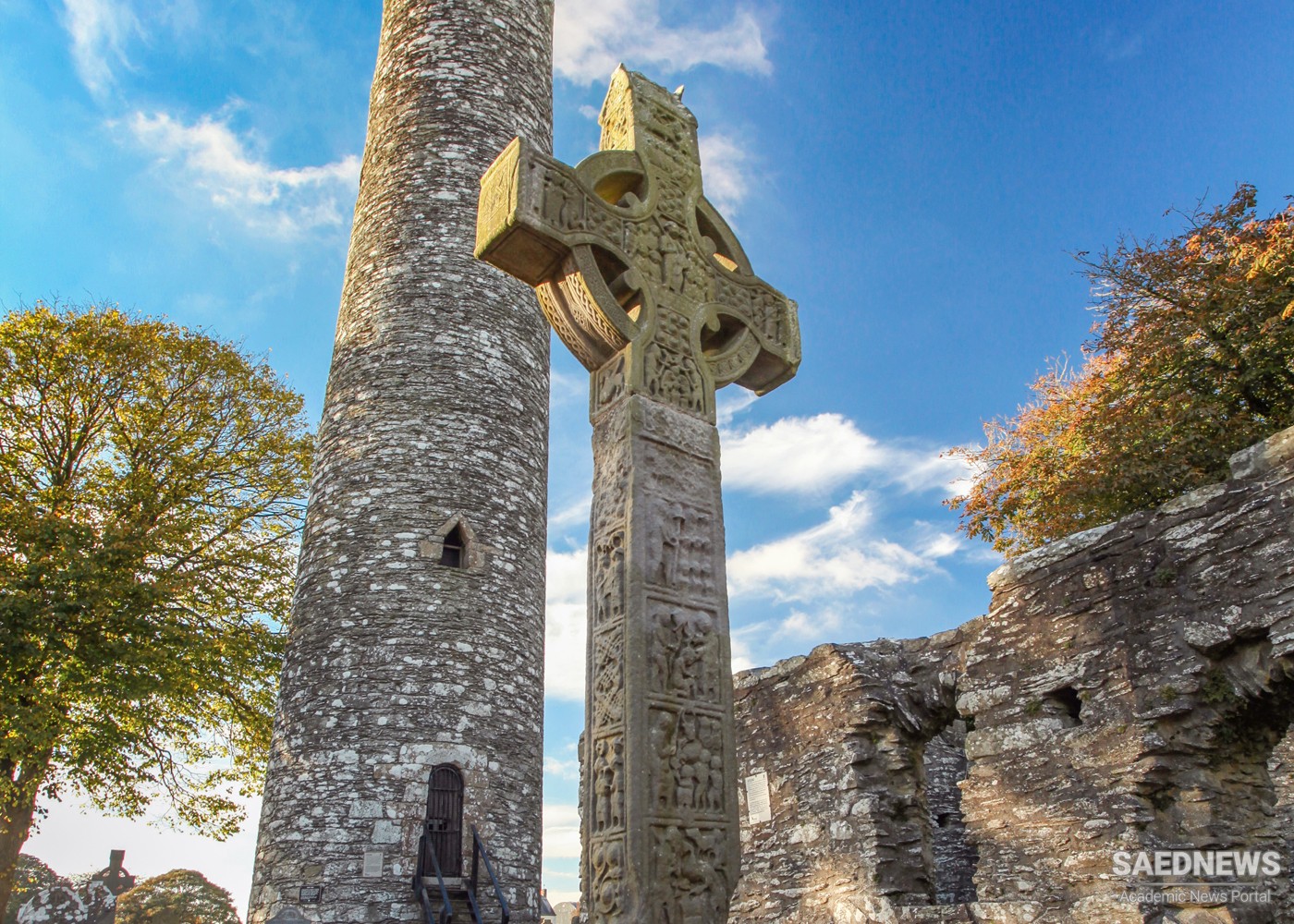Kathleen Hughes, in a discussion on ‘The Changing Theory and Practice of Irish Pilgrimage’, recounts the earliest religious peregrinations of the Irish throughout Britain and Europe from the 5th century AD onwards. The missionary zeal of these individuals is remembered to the present day in the dedication of churches to Columba, Moluag, Kilian and Columbanus. Holy Irish travellers such as 6th-century Fursey and Columbanus: ‘Though seeking salvation and solitude … founded a series of monasteries which rapidly became centres of learning, hostels for Irish pilgrims and headquarters of evangelistic effort’.
Interestingly, due to their numbers, the Irish at times became unwelcome in Europe. This may be related to the practice of imposing pilgrimage upon a sinner as a form of penance, or the Irish law that allowed a man to escape legal liabilities by setting out on pilgrimage. By the 10th century, however, the focus of Irish pilgrimage had changed and the main emphasis was no longer on the old-style wanderings, but on journeys to famous shrines at home or abroad.
According to Harbiso, early documentation of pilgrimage is ‘sparse and sporadic’, with information being gleaned from tangential references such as records of when and where pilgrims died. One of the earliest accounts of domestic pilgrimage, discussed by Harbison, was a traveller who died at Clonmacnois in the year AD 606. Some of the other early sites mentioned in the records include Glenda Lough (AD 951), Armagh (AD 976), Croagh Patrick (AD 1113) and Lough Derg, County Donegal (AD 1147). Thus, the origins of key sites for modern pilgrimage in Ireland, some dealt with in this chapter, can be traced back to the very early days of Irish Christianity.
By the 19th century, Catholic Irish pilgrimage was almost exclusively domestic, with the more extreme Catholic pilgrimage rituals in Ireland being a form of fascination for the aristocratic Protestants who documented them. The following piece by Dixon Hardy expresses his disquiet at the physical hardship endured by the pilgrims on Holy Island in East Clare:
"It is lamentable to consider the extent to which idolatry, attended by its inseparable concomitants, still prevails in this benighted country … as regularly as the season of Whitsuntide comes, here you find a concourse of people assembled to perform penance … this is performed on the naked knees through a heap of rugged stones; the females tuck up their clothes, and expose their persons in the most indelicate manner. Men of the most dissolute morals go to witness this part of the exhibition, but none can witness the finale without feelings of the greatest horror being excited; when it comes to this, all must (without assistance) descend on the naked knees, a step nearly a foot in depth. This is a most painful operation. The writhing postures, the intense agonies, and the lacerated knees of the votaries are most distressing to the spectators. After the descent they must go on their bleeding knees through the rough stones in the church to the east end, when in a posture of most profound reverence, they kiss a particular stone."


 Safety Measures in Tawaf: Pilgrimage and Strategic Management
Safety Measures in Tawaf: Pilgrimage and Strategic Management














































